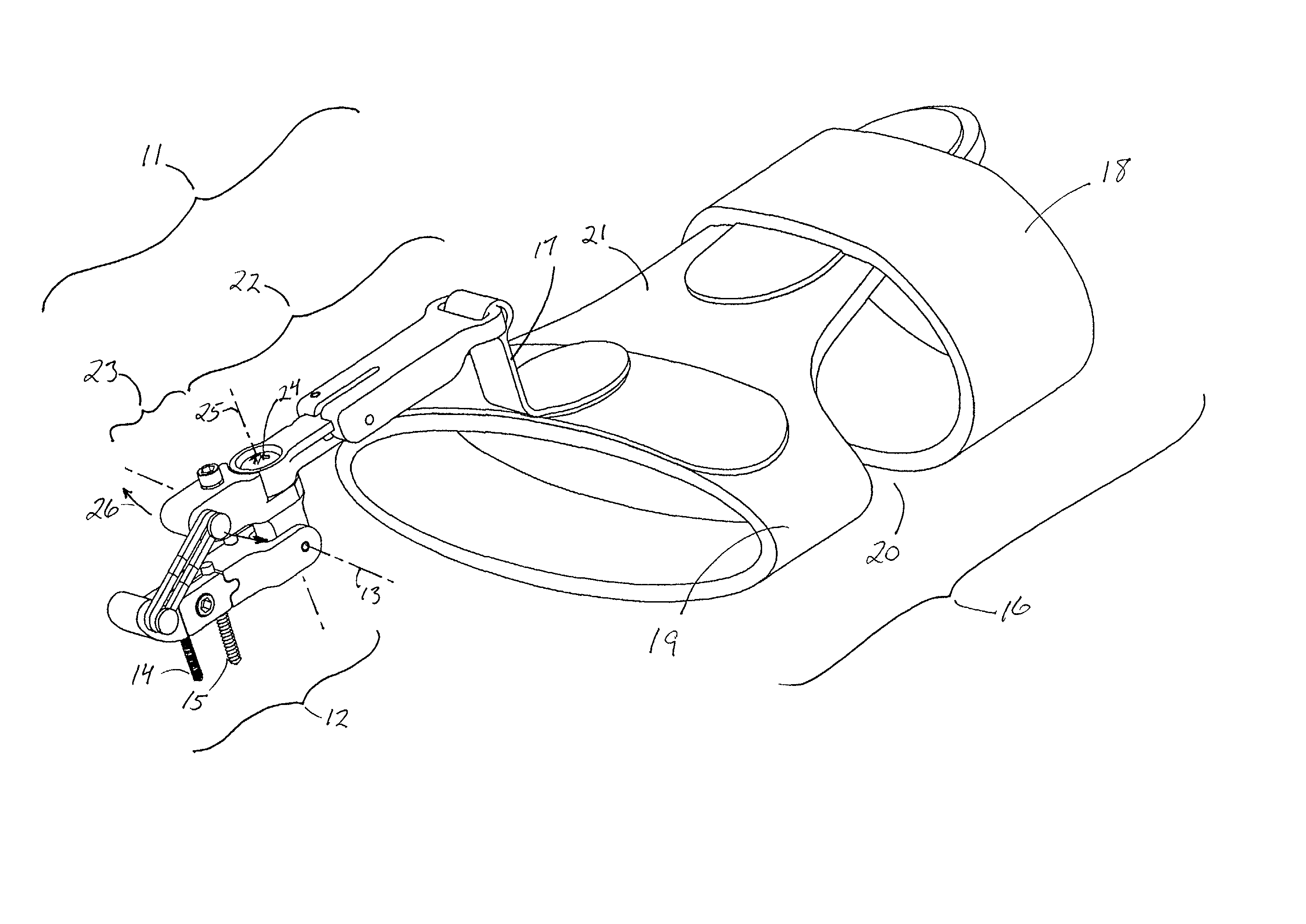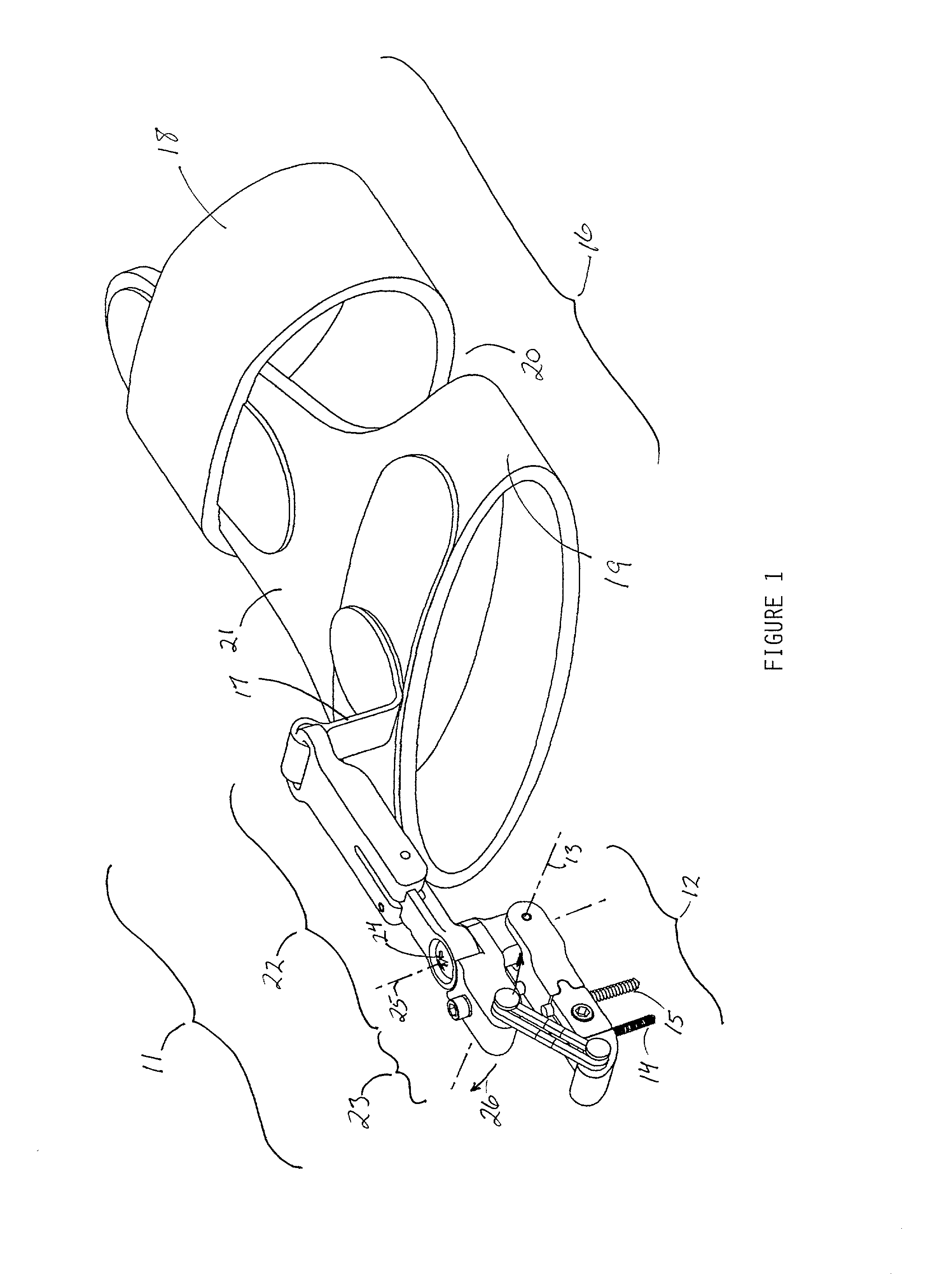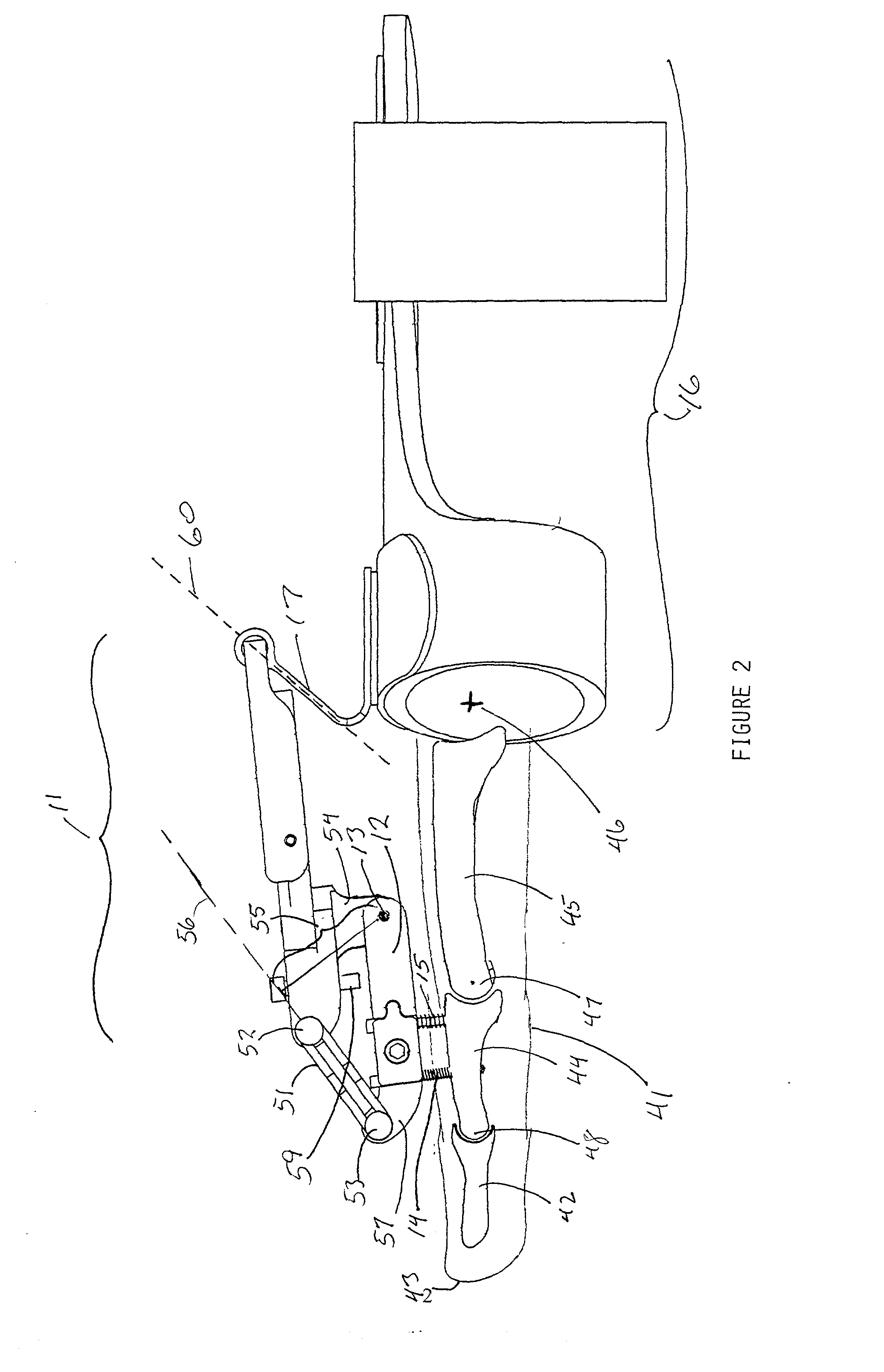Medical device for correcting finger joint contractures
a finger joint and medical device technology, applied in the field of finger joints, can solve the problems of muscle imbalance across joints, torque that these devices impose to increase the range of motion of joints, and the torque must be applied for a significant amount of tim
- Summary
- Abstract
- Description
- Claims
- Application Information
AI Technical Summary
Benefits of technology
Problems solved by technology
Method used
Image
Examples
Embodiment Construction
[0026] While the features and principles that characterize this invention and distinguish it over the prior art may be implemented in a variety of ways and embodied in a variety of constructions, these features and principles can best be understood by examination of specific examples. Several such examples are depicted in the attached figures.
[0027] FIG. 1 is a perspective view from above of a device illustrating an embodiment of the invention that is designed for the correction of a contracture or of a limited range of flexion. The two pivotally joined sections are a proximal support beam 11 and a distal support beam 12, each of which is elongate in shape and primarily straight, and the pivot axis 11 along which these beams are joined is perpendicular to each of the two beams. Attachment of the device to the patient's hand and finger is achieved by a pair of pins 14, 15 extending from the underside of the distal support beam 12 for securement to the middle phalanx through the dorsa...
PUM
 Login to View More
Login to View More Abstract
Description
Claims
Application Information
 Login to View More
Login to View More - R&D
- Intellectual Property
- Life Sciences
- Materials
- Tech Scout
- Unparalleled Data Quality
- Higher Quality Content
- 60% Fewer Hallucinations
Browse by: Latest US Patents, China's latest patents, Technical Efficacy Thesaurus, Application Domain, Technology Topic, Popular Technical Reports.
© 2025 PatSnap. All rights reserved.Legal|Privacy policy|Modern Slavery Act Transparency Statement|Sitemap|About US| Contact US: help@patsnap.com



